Rubber Tree Care Guide
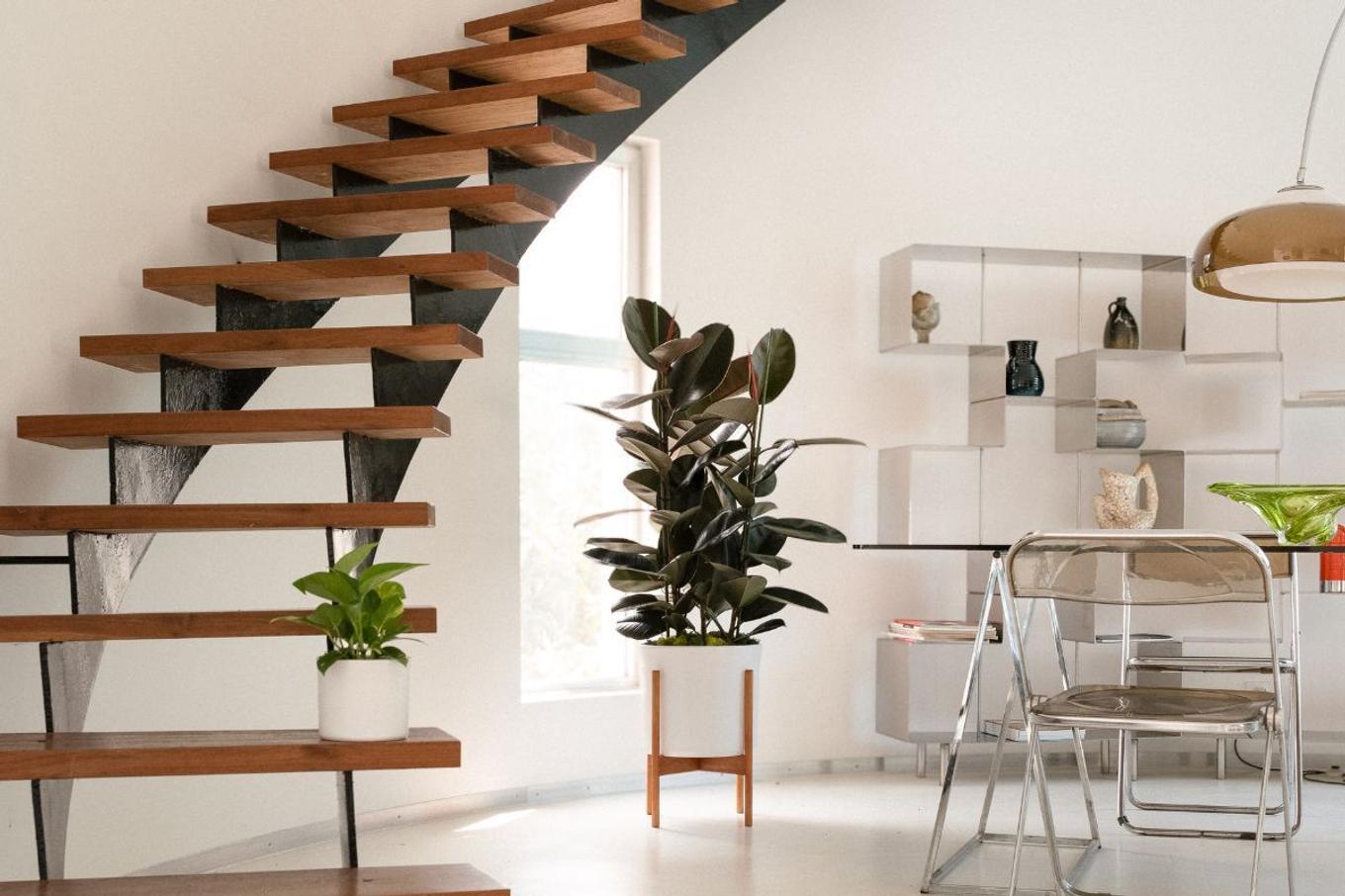
The Rubber Tree, also known as the Rubber Plant or Ficus Elastica, is one of the most resilient members of the ficus family—a group of plants sometimes known for their temperamental nature. With its striking burgundy leaves that shine from across the room, the Rubber Tree, however, is a plant that grows and thrives with just a bit of care. Keep reading for easy tips on how to keep your Rubber Tree healthy and vibrant!
Simple Care Instructions for the Rubber Tree
Light Requirements
Rubber Trees thrive in bright, indirect light but can also adapt to medium light conditions. For optimal growth, position your Rubber Tree near a bright window.
Watering Needs
Plants in the ficus family thrive off consistency, and the Rubber Tree is no exception. Water your Rubber Tree when the topsoil feels dry, typically every 7 to 10 days. Be careful not to overwater, and remember that it may need less frequent watering during the winter months.
Need help with watering? Use a moisture meter to always know the best time to water. Shop our favorite minimalist moisture meter here.
Humidity and Temperature
Rubber Trees thrive in warm, humid conditions, making them well-suited for typical indoor environments. Ideally, they prefer temperatures between 65°F and 80°F (18°C to 27°C) and should be kept away from cold drafts or sudden temperature fluctuations. While they can tolerate average household humidity, they flourish in higher humidity levels. If your home is particularly dry, especially during winter, consider misting the leaves occasionally, placing a humidifier nearby, or setting the plant on a pebble tray with water to maintain moisture in the air.
Soil and Fertilizing
Rubber Trees grow best in well-draining, nutrient-rich soil that retains some moisture without becoming soggy. A high-quality indoor potting mix works well, especially one that includes peat, pine bark, or perlite for better aeration and drainage. To keep your Rubber Tree thriving, feed it with a balanced liquid fertilizer twice a month during the growing season in spring or summer. In fall and winter, when growth slows, you can reduce or pause fertilizing. Avoid over-fertilizing, as this can lead to weak, leggy growth or leaf burn.
Common Problems and Troubleshooting Tips
Yellowing or Browning Leaves (Overwatering)
Symptoms: Leaves turning yellow or brown, typically starting from the bottom of the tree.
Cause: Excess water and insufficient light.
Solution: Let the soil dry out completely before watering again, which may take 2-3 weeks. Check moisture levels by feeling the soil through the drainage holes at the bottom of the pot. Prolonged overwatering can lead to more serious issues, sometimes requiring a soil change to restore the plant’s health.
Leaf Drop – Unstable Temperatures
Symptoms: Leaves falling off the plant.
Cause: Exposure to cold drafts, dry air, or insufficient light.
Solution: Keep your Rubber Tree away from air vents, open windows, or cold drafts. While it can adapt to indoor conditions, it thrives in warm, humid environments. If low light is the issue, move the plant to a spot with medium to bright, indirect light.
Leaf Droop – Over or Underwatering
Symptoms: Leaves sagging or drooping.
Cause: Most commonly due to underwatering, but overwatering can also be a factor.
Solution: Always check the soil before watering— it should feel dry to the touch before you water again. If overwatering is the issue, allow the soil to dry out completely before resuming a regular watering schedule.
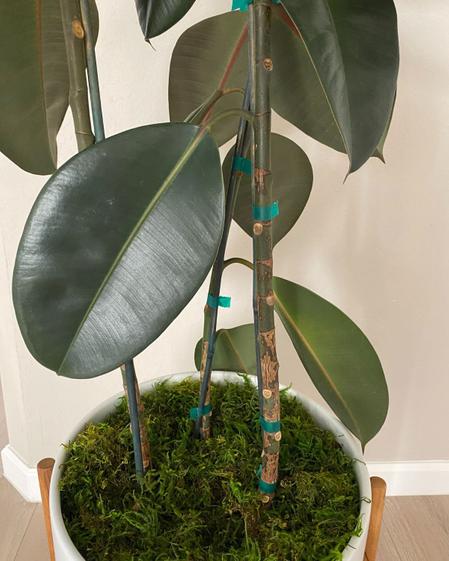
Leaf drop on a Rubber Tree often a cause of unstable temperatures
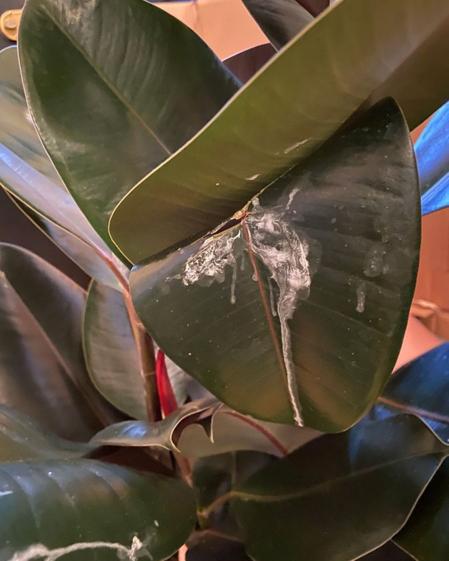
Broken leaves will leak a sticky white sap
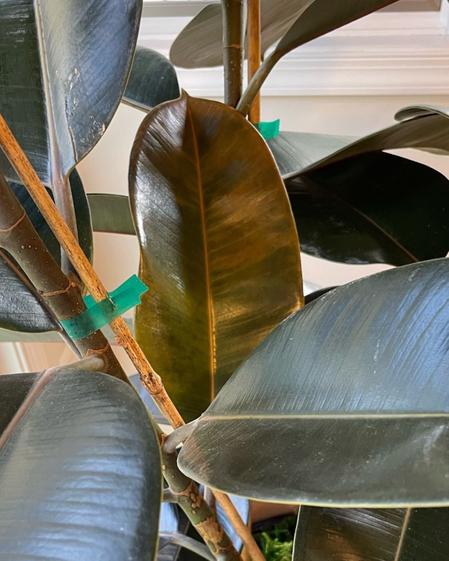
Brown or yellow leaves most likely overwatering
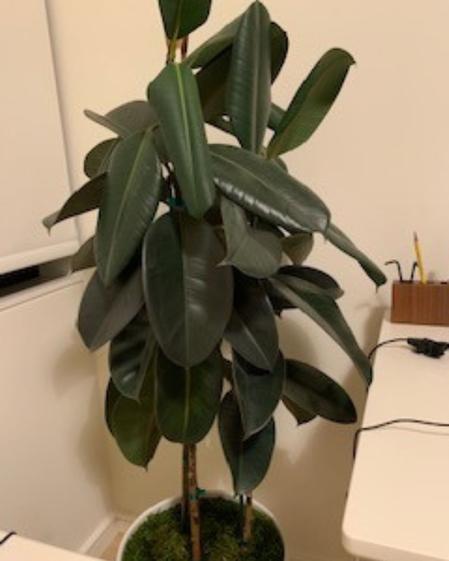
Droopiness is most likely a watering issue
Seasonal Care Tips
Rubber Trees have a strong tendency to grow toward the light, so rotate your plant every few weeks to maintain a balanced shape and prevent it from leaning to one side. Their large, glossy leaves can collect dust, which can block sunlight and slow growth. Wipe them down with a damp cloth or give them a gentle shower to keep them clean and shiny.











